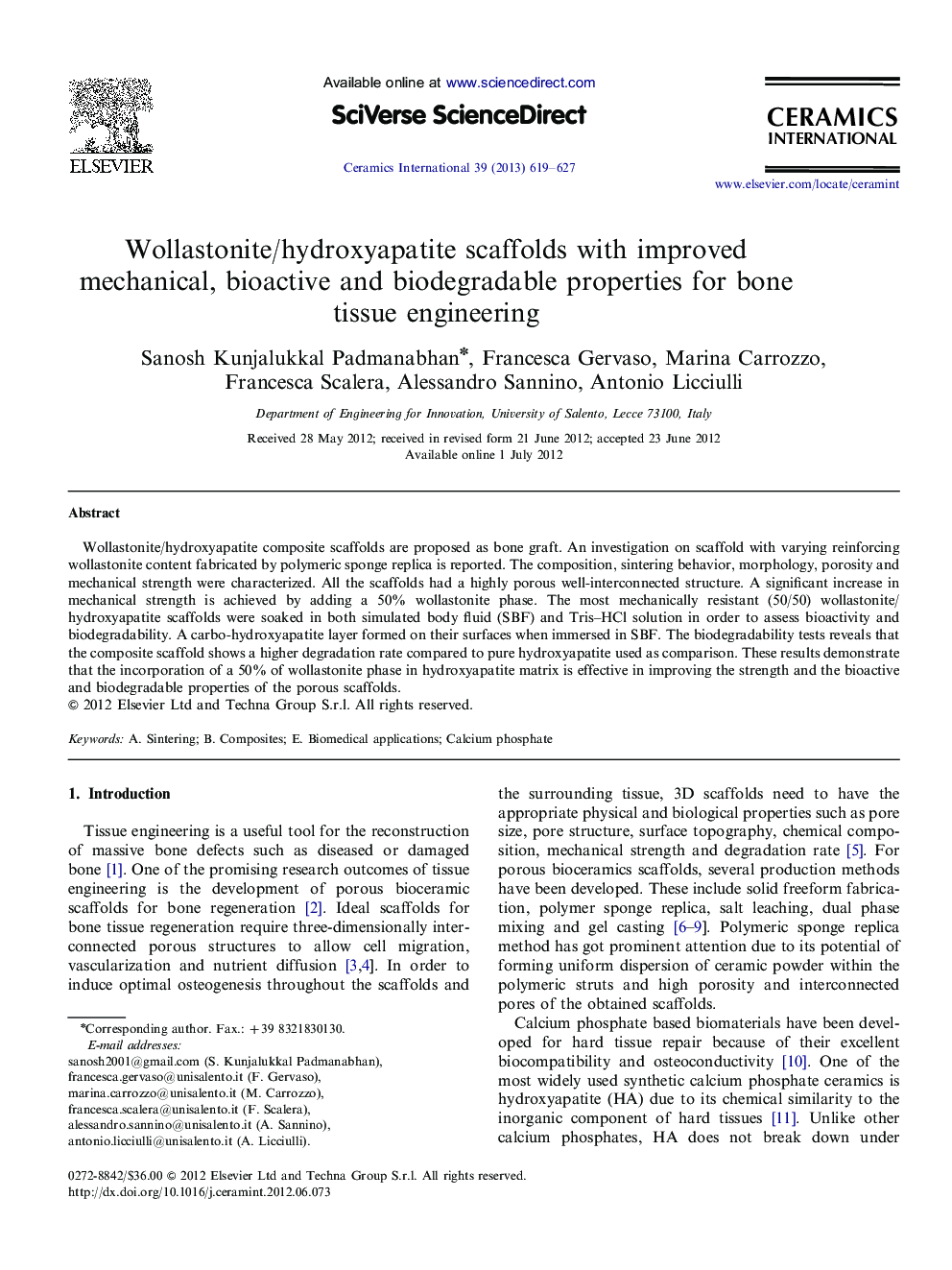| Article ID | Journal | Published Year | Pages | File Type |
|---|---|---|---|---|
| 1463506 | Ceramics International | 2013 | 9 Pages |
Wollastonite/hydroxyapatite composite scaffolds are proposed as bone graft. An investigation on scaffold with varying reinforcing wollastonite content fabricated by polymeric sponge replica is reported. The composition, sintering behavior, morphology, porosity and mechanical strength were characterized. All the scaffolds had a highly porous well-interconnected structure. A significant increase in mechanical strength is achieved by adding a 50% wollastonite phase. The most mechanically resistant (50/50) wollastonite/hydroxyapatite scaffolds were soaked in both simulated body fluid (SBF) and Tris–HCl solution in order to assess bioactivity and biodegradability. A carbo-hydroxyapatite layer formed on their surfaces when immersed in SBF. The biodegradability tests reveals that the composite scaffold shows a higher degradation rate compared to pure hydroxyapatite used as comparison. These results demonstrate that the incorporation of a 50% of wollastonite phase in hydroxyapatite matrix is effective in improving the strength and the bioactive and biodegradable properties of the porous scaffolds.
